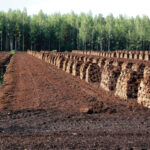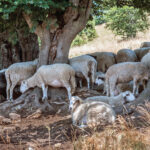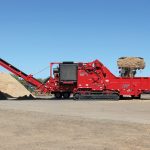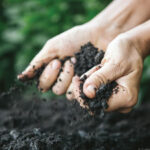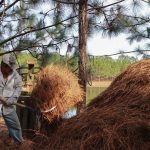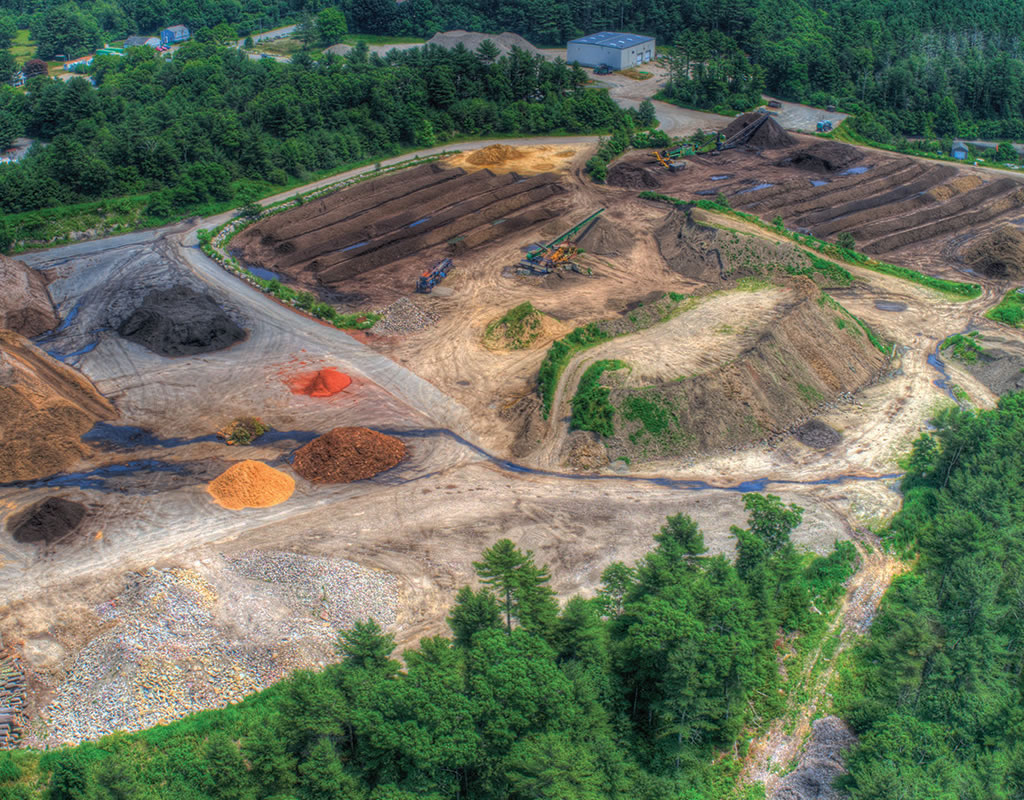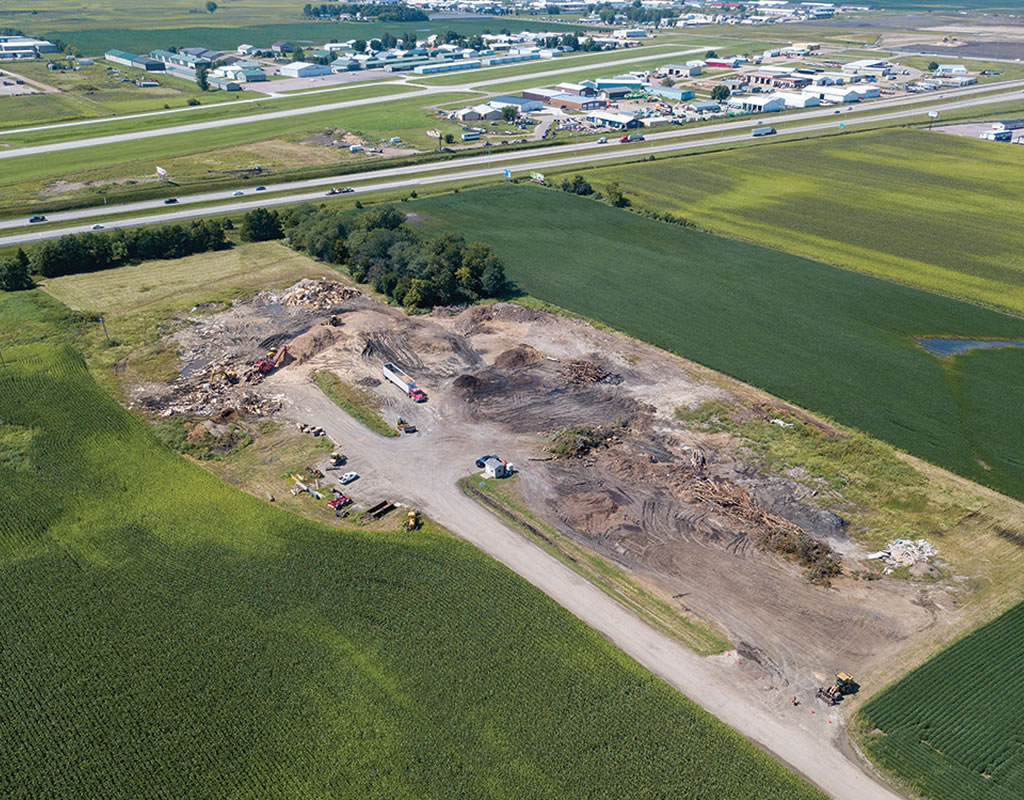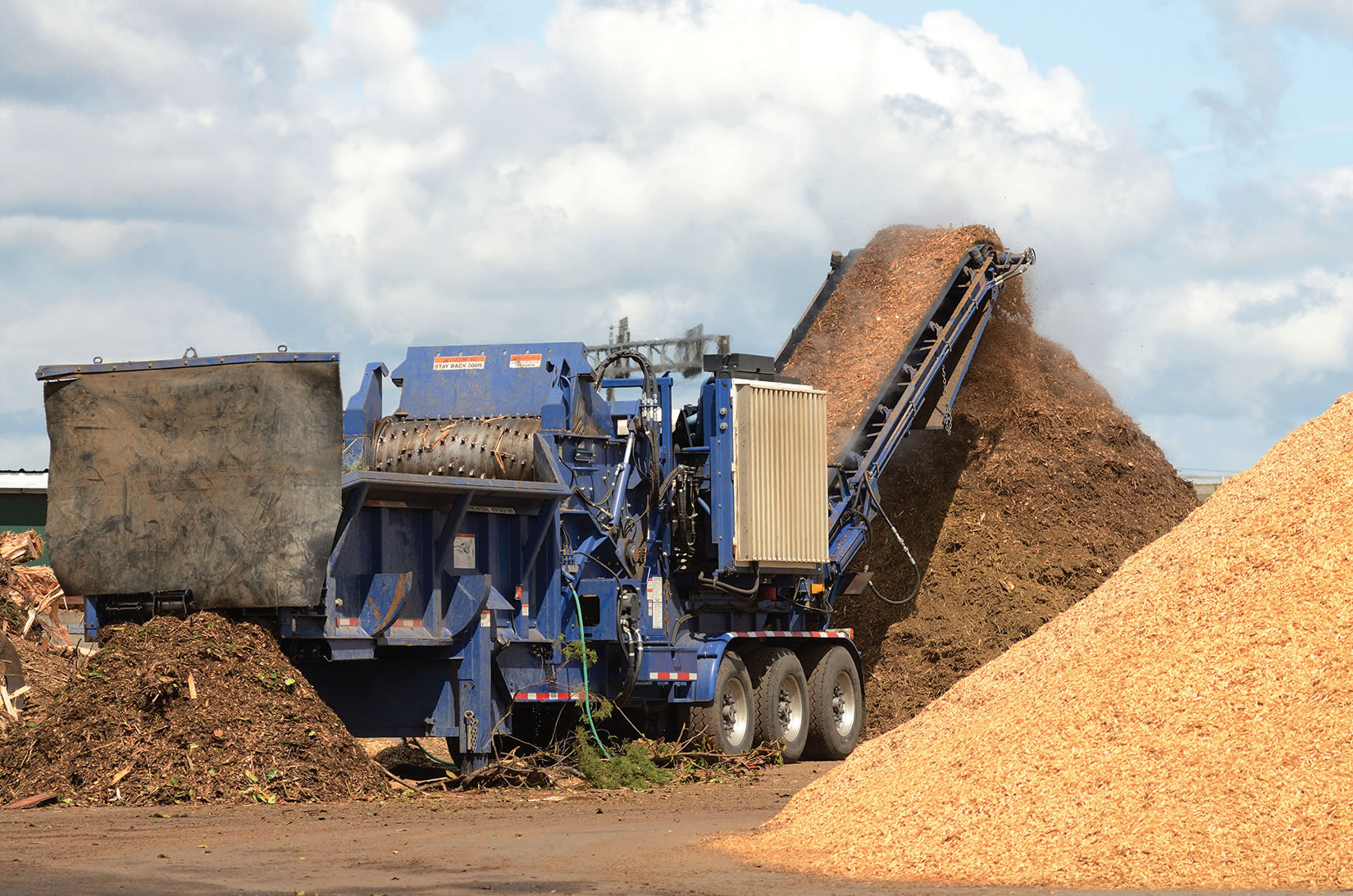By Ken McEntee
Several North American dairy farmers are employing a worm-based filtration system to clean manure-laden wastewater to use for irrigation while producing a marketable soil amendment and potentially earning credits for the reduction of greenhouse gas emissions.
The patented BioFiltro BIDA (biodynamic aerobic) filtration system is proving to solve the problem of high nitrate levels in dairy farm wastewater, said Russ Davis, president and founder of Organix, a Walla Walla, Washington based organic residuals management company.
"There are not a lot of good options out there that address the liquid fraction of dairies," Davis said. "Most of them require chemicals or flocculent, are sophisticated to operate and require a manager with some sort of a degree in engineering or something to operate."
The BioFiltro system, however, is simple and energy efficient, Davis said.
In the process, wastewater from the dairy operation is sprayed into filter boxes that contain wood chips or shavings, along with thousands of worms that eat the solids fraction of the wastewater, leaving behind clean water for irrigation and castings that can be sold as a soil amendment. According to Chile-based BioFiltro (the developer of the filtration system), the system catalyzes the digestive power of worms and microbes to remove up to 99 percent of wastewater contaminants - such as ammonia and possible greenhouse gasses - within about four hours. Studies, the company said, show a greenhouse gas reduction of 91 percent.
Removing the contaminants from the wastewater allows a farmer to use more of it for irrigation without overloading fields with nitrates. Farmers have been under increasing pressure from state and federal regulators over high levels of nitrates on agricultural fields.
In May, the U.S. Court of Appeals for the Ninth Circuit dismissed a petition by a Washington dairy farmer who asked that a 2013 science study issued by the U.S. EPA - which was used to justify drastic enforcement action against his farm - be withdrawn because EPA failed to conduct a proper peer review of the study. The report - Relation Between Nitrate in Water Wells and Potential Sources in the Lower Yakima Valley, Washington - purported to prove the dairy farmers in the Central Washington area were responsible for nitrate in the region's groundwater.
The Washington State Dairy Federation said the EPA report contains false science.
A new application
About 180 BioFiltro units are in operation around the world, including such varying climates as Antarctica and the Atacama Desert in Chile and Peru. Almost all of those are used to clean wastewater from industries like wineries, slaughterhouses and food processors. Only a few are being used on dairy farms, including applications in Washington, California and Canada. The largest is operating at Royal Dairy, a 6,000-cow dairy farm in Royal City, Washington.
In 2016, Davis received a call from Austin Allred, owner of Royal Dairy.
"Austin had heard about the BioFiltro system and asked my opinion about whether it would work for dairy wastewater," Davis said. "I told him I was suspicious that it would work, because most things don't work."
After viewing the system, Allred decided to try out a small 2,000 square foot testing unit.
"After testing, Austin told me he thought it was the real deal," Davis said. "For part of the year we watched it work, and mostly the system worked exactly like it was supposed to."
Before implementing the BioFilto system, Royal Dairy was storing its wastewater in lagoons like most other dairy farms. After seeing "incredible improvement of water quality after BIDA process," the dairy expanded its system last year to 320,000 square feet - large enough to process 750,000 gallons of wastewater per day, the company said in a YouTube video posted by Darigold, the marketing and processing subsidiary of the Northwest Dairy Association, a farmer-owned cooperative. According to Royal Dairy, the two main things that come from the process are clean water and nutrients that worms strip from the wastewater and leave behind in the form of castings.
The nutrients can be applied to organic or conventional crops, and "because it's natural, it is in the correct ratios," for irrigation, Royal Dairy said in the video.
A third component is the carbon offsets, which Royal Dairy called a "short to medium solution to help companies address their carbon emissions." Keeping the wastewater out of lagoons prevents the formation of methane in the first place, and the dairy can earn six to seven carbon credits per cow per year.
Meanwhile, Organix, which specializes in organic-based soil amendments generated by confined animal feeding operations (CAFOs), has entered an agreement with BioFiltro for the rights to sell filtration units in Washington, Oregon and Idaho and the marketing rights to the worms and castings left after a "harvest" of the filters.
Davis believes there is a significant market potential, both for the castings and the worms.
Davis noted that dairy farms generate wastewater that contains nitrates all year long. But the growing season is generally only a half a yearlong in regions like Washington.
"So, for the other six months, if you're lagooning it, you have to store the material in the lagoons where it smells bad and creates methane," he said.
Similar to vermicomposting
The BioFiltro process is similar to a typical vermicomposting system.
Wastewater is pumped to and sprayed onto the filter using rotating sprinkling devices that are similar to landscaping sprinklers.
"Normally, if you're going to make worm compost or worm castings, you would place a substrate down, lay the worms on there and then cover them up a little bit," Davis said. "After eating the food in there, they leave the castings beneath them. In this process, we put in wood chips or shavings, depending on the application, and you seed it with thousands of worms. As soon as you start adding the dirty water, the chips start to decompose, then the worms have several jobs to do."
The main job is to eat the suspended solids, which typically account for about 3 percent of the wastewater, Davis said. While doing so, they keep the filter clean, allowing the water to percolate through. By aerating the filter, the worms keep the system aerobic. The water filters through in about four hours. The clean water is then stored in ponds for irrigation.
After about 18 months of use for dairy wastewater - possibly as soon as 12 months - Davis said, the filter is "harvested," and the castings can be collected and sold. In some applications, such as wineries, he said, the harvest cycle can be as long as three years. It depends on the types of solids contained in the wastewater.
"After the castings are harvested and whatever's left of the wood chips are taken out, it's all replaced with new worms and new chips," he said. "At Royal Dairy we pull out about 25,000 yards of material."
Revenue streams
Davis foresees two different products that can be marketed.
First is the material straight out of the worm bed - worms, castings and substrate.
"It can go straight into a truck and shipped," Davis said. "That client would be somebody like an orchard that will apply it beneath the trees and get all the benefits of all of the biology - the worms and the chips and whatever else is in there."
The second product would be screened castings, probably sold in bags. That market is still in the developmental stages, but could be significant, Davis said.
Worm farms, he said, are selling the material for $300 to $400 per yard. While researching sales outlets for the Royal Farm material, Davis said he contacted a worm farm in Washington.
"The owner asked how many yards I was talking about," Davis said. "I told him we were going to harvest 25,000 yards. He said, 'I only do 500 yards a year here.' The market we're going for is the wholesalers who will buy and resell the material. It gives them an opportunity to significantly expand their existing market without having to add any kind of infrastructure - just basically brokering for us."
Currently, Davis said, the cannabis industry is probably the largest user of worm castings, but at $300 to $400 per yard, the price is too high for agricultural markets. Bringing that price down to around $200 per yard would make the product more in line with poultry manure prices.
Blended products, he said, could be the key to growing the market.
"If you could take 10 yards of compost to a yard of castings, then you're starting to create a large-scale potting soil type applications for agriculture," Davis said. “The long-term goal is to grow the worm castings market because we know that worm castings are a great soil amendment."
Dairies that utilize the BIDA system, Davis said, may generate addition revenue through greenhouse gas reduction credits.
"The methodology and the protocols to capitalize on methane reduction credits are all now established and what's coming next are the carbon sequestration credits," he said. "Because we are producing essentially a premium sequestration product, we feel like this might really take off a lot larger than we thought."
The capital cost of the system varies depending on a variety of variables, but Davis said a ballpark estimate would equate to about $1,000 per cow.
"It's something that a farmer would want to look at if he's getting ready to put in a new lagoon or having trouble with a regulator over nitrates," he said. "Farms are under increasing pressure to deal with nitrates in their fields and the worm filter does a really good job of managing contaminant, including ammonia and all the dissolved nitrogen. A byproduct of that is that it really reduces odor significantly. Hydrogen sulfide is the primary odor that you would smell at a dairy - that kind of sulfur smell. This filter eliminates that because hydrogen sulfide is an anaerobically produced contaminant. So, once you aerate the water, that odor is taken away."
The author is editor and publisher of Composting News (compostingnew.com).
Related News
Subscribe Today
Every other month, Soil & Mulch Producer
News brings you important stories about:
• New Technology
• Products
• Industry News
• Research Studies
Soil & Mulch Producer News features articles and services relevant to your daily operations.

